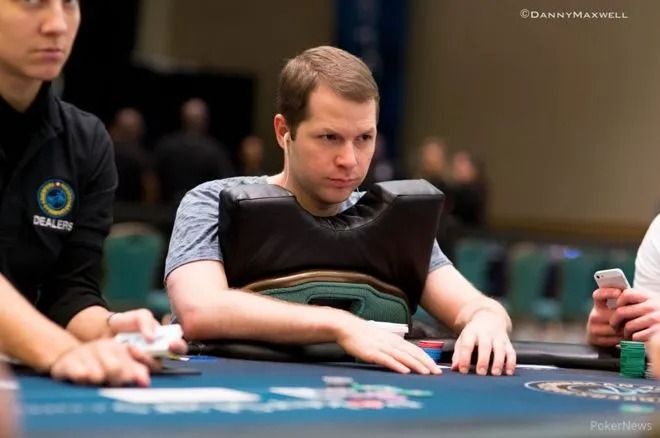This week’s hand involves a not uncommon situation no-limit hold’em — you flop a hand of medium-value such as second pair versus a straightforward opponent who is playing passively by checking and calling. The questions in a hand like this involve deciding whether or not to bet and if betting to decide on the best bet sizes to get these players to call with lesser hands.
This hand comes from the same $1,000 buy-in tournament we were discussing last week, also happening relatively early in the event when the stacks were still deep and the blinds just 100/200 with a 25 ante.
My straightforward-playing opponent opened with a raise to 500 from middle position, and I elected to call from the cutoff with {Q-Hearts}{J-Hearts}. We both began the hand with about 20,000. The flop came {K-Hearts}{Q-Spades}{7-Clubs} and my opponent checked.
As I discuss in the video below, since my opponent is straightforward I can think about what sorts of hands he would be checking in this instance as I decide whether to bet my hand for thin value or to check behind.
When facing someone who plays honestly, it is safe to assume the player tends to have whatever it is he or she is representing. If players like this bet, they tend to have a strong hand, and if they check, they have either a marginal or weak hand.
Take a look at how I decided to proceed in this spot, and hear what else I have to say about playing my middle pair against this kind of opponent:
As I am suggesting above, when a straightforward opponent checks, your decent marginal made hands (like middle-pair hands) can be bet for value. But think also about what bet sizes are going to work best in order to get calls from the hands you want to be calling you.
Jonathan Little is a professional poker player and author with over $6,300,000 in live tournament earnings. He writes a weekly educational blog and hosts a podcast at JonathanLittlePoker.com. You can follow him on Twitter @JonathanLittle.












